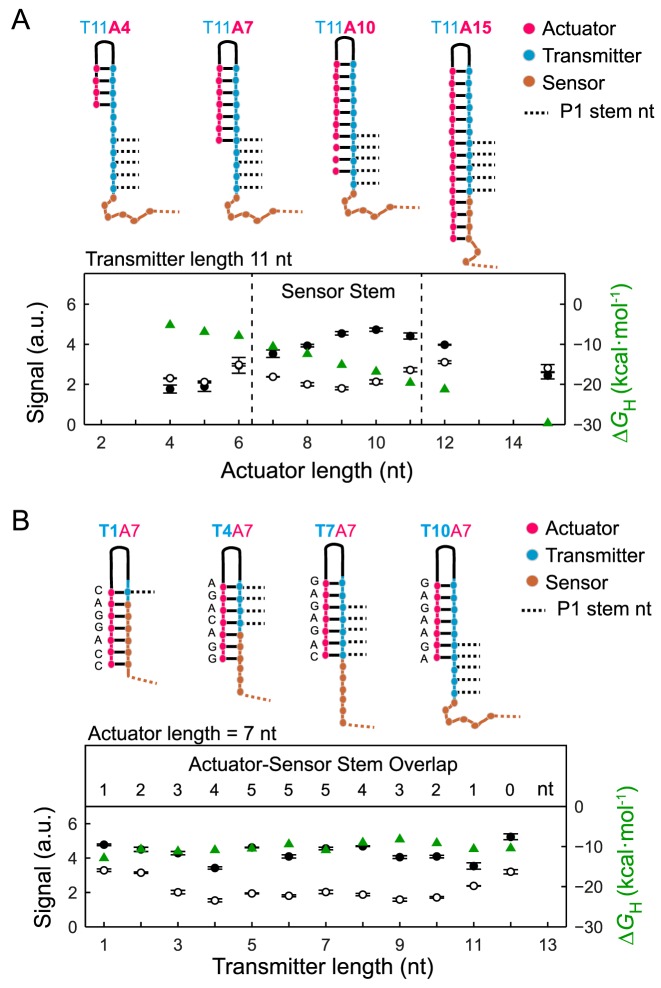Figure 3.
Dependence of the riboswitch fluorescence signal on the transmitter and actuator length in absence and saturating glycine concentration. (A) Top: RNA secondary structure plots of four representative fluorogenic glycine riboswitches with constant transmitter and changing actuator length. The plot shows the fluorescence signal of the riboswitches with constant transmitter length of 11 nt and variable actuator length in absence (•) and with 0.1 M glycine (∘). Dashed lines in the plot denote for the range where the actuator exhibits a sequence overlap with the P1 sensor/transmitter stem loop. (B) Top: RNA secondary structure plots of four representative fluorogenic glycine riboswitches with constant actuator and changing transmitter length. Fluorescence signal of the riboswitches with constant actuator length of 7 nt and variable transmitter length in absence (•) and with 0.1 M glycine (∘). Additionally, in both plots the hybridization energies (ΔGH) between the transmitter and actuator are added ( ). Further, the competing number of nucleotides of the actuator with the sensor stem P1 for the transmitter is indicated.
). Further, the competing number of nucleotides of the actuator with the sensor stem P1 for the transmitter is indicated.

